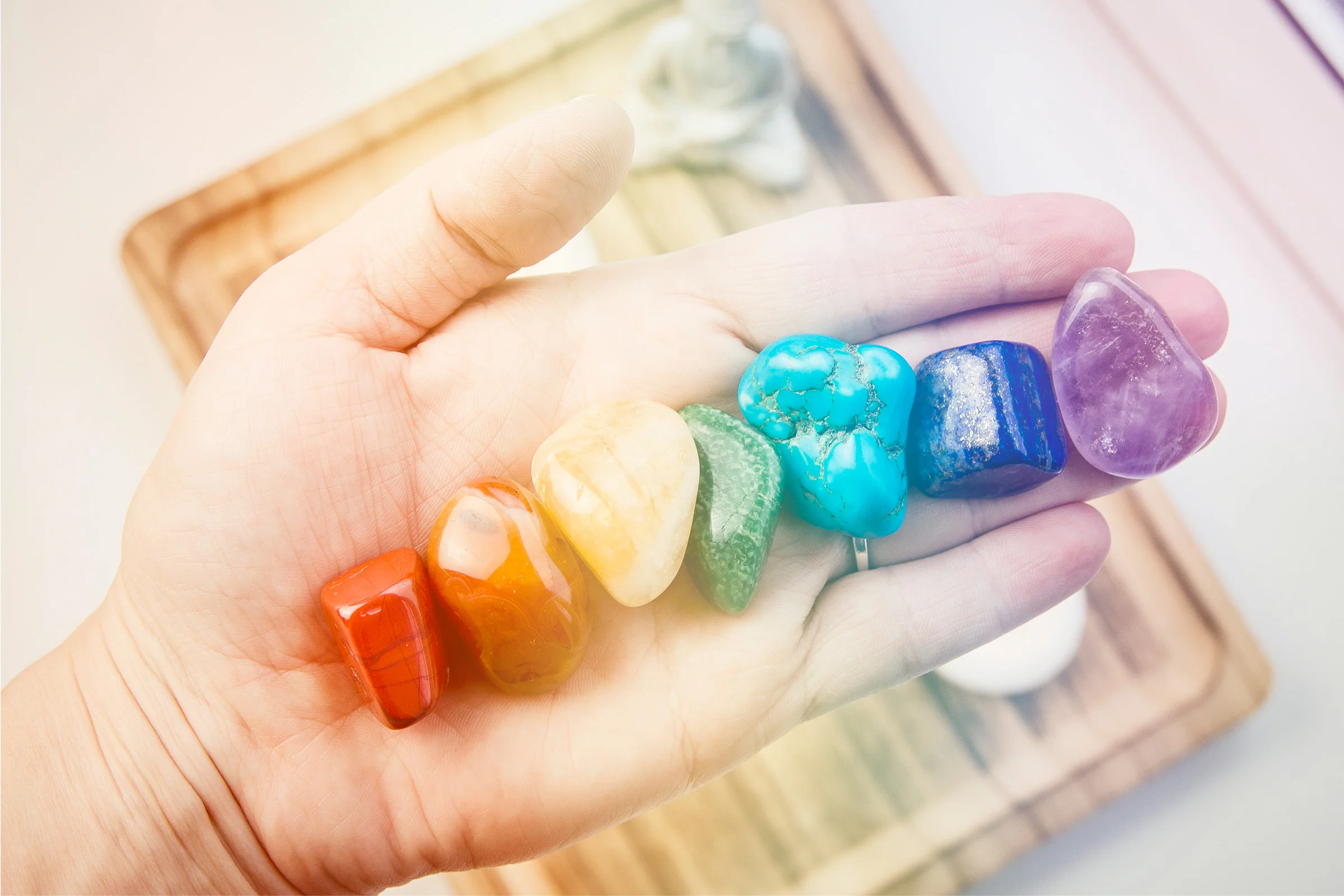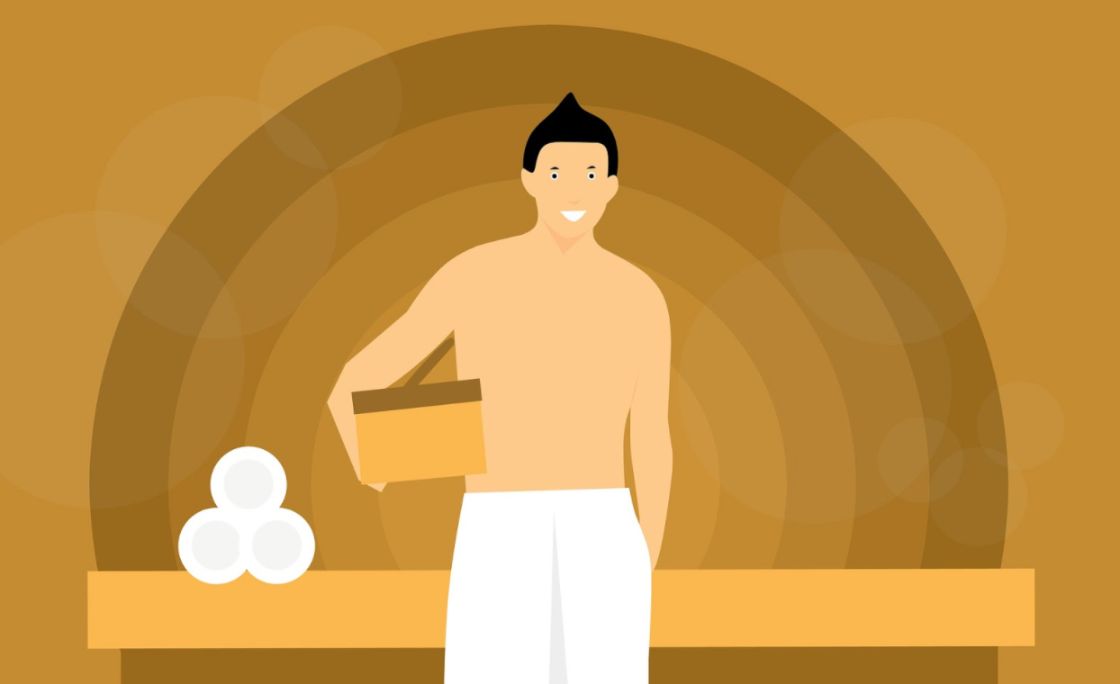Headaches are one of the most common reasons for seeking medical advice, and the incidence of them seems to be on the rise.
Although not considered a serious ailment to those not experiencing it, a headache can be significantly problematic.
Our fast-paced lives, combined with a lack of exercise and an abundance of poor-quality food, result in more of us experiencing frequent and more severe headaches than ever before.
Headaches fall into two categories.
Headaches can be either primary or secondary, which means that they either occur independently or as a result of another disorder or medical condition.
A primary headache can occur as a migraine, a tension headache, or a cluster headache.
Cluster headaches are sometimes classified as a type of a migraine
A secondary headache can be the result of a sinus infection, allergies, gum or tooth issues, injuries, or tumors.
Sometimes the propensity for headaches seems to be inherited, particularly in the case of migraines or cluster headaches.
There is, unfortunately, no single cure for a headache.
Remedies are specific to the individual and to a headache, and what works for one person may be completely ineffective for another.
Additionally, painkillers, whether prescription or over-the-counter, can have adverse side effects including, unfortunately, headaches.
Painkillers fix the problem only temporarily; they don’t treat the underlying cause of a headache, especially when it’s a chronic condition.
One of the advantages of home remedies for headaches is that they have few to no side effects, and they are more likely to eliminate the cause of a headache rather than just mask the symptoms.
They’re also more readily available because they use common ingredients; there’s no need to go to the pharmacy for a prescription.
Many home remedies for headaches are available, for both acute and chronic headaches.
Some home remedies have been the formulary basis for current medications, except the holistic remedies lack the addictive properties of the commercially developed products.
If you’re wondering how to get rid of a migraine or a tension headache, the following may be helpful.
Feverfew
Native to the Balkans and Asia Minor, dried feverfew leaves are used to treat chronic headaches, particularly migraines, although they have other health applications also.
Studies in Great Britain on the use of feverfew for migraines found that almost 75 percent of study participants had migraine relief when they consumed two to three fresh feverfew leaves daily.
The combination of feverfew and white willow bark yields a substance similar to aspirin, which can be used in combination by those who are not sensitive to aspirin.
However, if you’re taking blood thinners, be sure to ask your medical professional before using this.
According to a study published in Clinical Drug Investigation, the combination of feverfew and white willow bark reduced both the incidence and the severity of migraine headaches in those who participated in the study.
Freshly Brewed Coffee
Blood vessels tend to enlarge before the onset of a migraine or another headache.
The caffeine in freshly brewed coffee causes blood vessels to constrict, thereby reducing or eliminating the pain.
This is one reason why many painkillers contain caffeine. However, overuse of caffeine can also trigger a headache.
Moderation is the key here, as overuse of any substance can have negative side effects.
Green Tea
Similar to coffee, green tea is sometimes useful in providing headache relief.
Green tea contains caffeine, which can help eliminate migraine pain.
However, it’s contraindicated when combined with some prescription and over-the-counter medications, so check with your medical professional if you’re currently on migraine medication.
If you’re pregnant or breastfeeding, you should check with your medical professional before consuming green tea.
It can also be contraindicated with some prescription medications for other health issues.
Chamomile Tea
Whether used as a tea, in liquid form, in capsules, or as a topical application, chamomile can help relieve some types of migraines.
Chamomile can be contraindicated for those with asthma, ragweed or other allergies, and liver disorders, so check with your medical professional before using it if you fall into any of these categories.
Avoid Food Additives
MSG, or monosodium glutamate, is a common flavor enhancer and can trigger a migraine in some people.
It’s especially prevalent in Chinese food, soy-based items, and highly processed foods.
Other problematic additives include anything that has been hydrolyzed, such as yeast or soy protein, phenylethylamine, tyramine, nitrites and nitrates, and tartrazine.
Some foods, such as cheese, chocolate, and yeast products, can also trigger headaches or migraines.
Fresh Ginger
Ginger is excellent for treating both a migraine headache and nausea that can accompany it.
To drink it as a tea, place several slices in some water and simmer for several minutes.
Remove the slices, add honey and/or lemon if desired, and then sip slowly.
Inhale Peppermint Essential Oil
If your migraine or a headache has you immobilized, grab your peppermint essential oil.
It should be combined with a carrier oil since it’s considered a hot oil and can burn your skin if applied straight.
Dilute it at a minimum ratio of 1:4, one oil to four carriers, and massage onto your temples and behind your jaw.
You can also place some under your nose and inhale deeply.
Menthol is the active ingredient in peppermint oil, and it initiates a cooling sensation that calms and numbs the area.
It’s available in many forms including topical and ingestible and provides many other health benefits as well.
Cayenne Pepper
Capsaicin is the analgesic ingredient in cayenne pepper.
Studies dating from 1998 that were published in the Clinical Journal of Pain indicate that cayenne pepper significantly reduces headache pain when applied to the nasal passages.
It may seem counterintuitive that a spicy substance can alleviate pain, but it is effective.
Those who want to try this should dissolve 1/2 teaspoon cayenne in 1/2 cup of warm water, then apply gently with a cotton swab or Q-tip.
It may feel very warm, but this is an indication that it’s effective.
It may be necessary to stir the mixture often so that the cayenne remains in suspension, but users swear by this antidote to their headaches.
Eat Nuts
For those who are not sensitive or allergic to them, almonds can help alleviate tension headaches.
Almonds contain salicin, which is an analgesic that is used in over-the-counter painkillers.
Apple Cider Vinegar
Apple cider vinegar, or ACV, is very common in natural remedies, and science has proven its effectiveness in treating some ailments.
A steam treatment that uses ACV can provide welcome headache relief.
To try this, use a large bowl and mix 1/4 cup of ACV with 3 cups of boiling water, or as much as needed to fill the bowl halfway.
Cover your head with a towel and inhale the steam for between five and ten minutes, taking care not to burn your face.
Breathe deeply until the water cools, then remove the towel, dry your face, and drink at least one glass of water.
Stretch Your Muscles
Life is full of stress and tension, and many of our muscles become knotted and tense during the course of a day, which can cause a headache in the back of the head or shoulders.
To alleviate knotted muscles, stretch your entire body starting with your feet.
To stretch your body:
- Rotate your feet in one direction, then reverse;
- Point and flex your toes, drawing the toes as far back toward your body as possible;
- Lean sideways from your waist, and slowly bring one arm up the side and over your head;
- Repeat the sideways lean on the other side;
- Tilt your head to one side, then roll it in a circle;
- Repeat the tilt and circle of your head toward the other side;
- Place your hands on your shoulders and pull your arms back as far as possible;
- Pull your stomach in and then thrust your abdomen forward;
- Sit or stand as tall as possible, then reach overhead like you’re trying to touch the ceiling.
All of the above should help to relax tense muscles and mitigate the painful signals your neurons are sending to your brain that will result in a migraine or a headache in the back of your head.
Breathe Correctly
Shallow breathing, which is what most of us do, doesn’t properly oxygenate our bodies and the result is often a headache.
Breathe from your diaphragm and make proper breathing a habit.
Do you want to know how to get rid of a migraine?
Breathe deeply and inhale peppermint essential oil when you do.
You’ll feel the menthol permeate your lungs, and not only will your headache disappear, you’ll feel energized and awake.
Yoga, Tai Chi, Meditation
Even if you’ve never considered them, yoga, tai chi, meditation, and other East Asian practices can be of significant benefit to those who are prone to migraines or headaches.
These disciplines teach focus and tension relief so they can be of particular benefit for those who are habitually stressed and dreading the next headache in the back of their head.
The results of a study conducted in Finland in 2012 showed that women who regularly participated in yoga had a 69 percent decrease in the frequency and severity of their headaches.
Tai chi has been shown to help alleviate tension and migraine headaches by increasing harmony and balance in the body’s systems.
Those who achieved the best and most long-lasting relief using tai chi were those who made it a part of their regular, daily routine.
It’s very beneficial for balance, particularly for seniors, so if your headaches affect your balance, this may be an excellent remedy for you.
Meditation can alleviate stress, thereby preventing the onset of a headache or a migraine.
Fish Oil
For those not subject to gout or fish allergies, fish oil capsules can help reduce inflammation which can cause a headache.
Regular ingestion of fish oil increases the body’s level of omega-3 fatty acids, so it’s also healthy for your heart.
Fish oil can also be taken as a liquid mixed with cold orange juice for those who can tolerate the taste.
Drink Water
Dehydration is common among migraine and headache sufferers.
It’s important to drink good quality water. Sodas, coffee, tea, and other such drinks shouldn’t be included as part of your daily water intake.
Anything with caffeine in it is a dehydrator, and will further reduce the amount of water in your body.
As soon as you feel a headache starting, drink a glass of water.
If your headache doesn’t abate within a few minutes, drink another glass of water and/or try some of the suggestions above.
The average adult is about 60 percent water, so we need to drink adequate amounts of plain water in order to keep our bodies in homeostasis.
Six to eight glasses each day is considered sufficient by most medical professionals.
Those who engage in strenuous work or exercise may need more because they sweat profusely.
Those who are pregnant or lactating should also increase their water intake, as should those who are ill.
If you’re ill, you need plenty of fluids to enable your lymphatic system to flush the toxins from your body so that you get well.
Monitor Your Food Ingredients
Food is no longer automatically healthy, particularly if you snack a lot or eat out a lot.
Most food that isn’t prepared at home is laden with additives, chemicals, and preservatives, many of which can trigger food-related migraines or headaches.
Make a habit of reading labels so that you know what is in the food you eat.
If you notice that you consistently have a headache after eating a certain food, then eliminate it from your diet.
Even food prepared at home can be problematic if you use prepackaged mixes and convenience foods.
Try using noodles and spices rather than Hamburger Helper and see if your headaches disappear.
Massage Your Temples
Particularly if your headache is sinus related, massaging your temples can help alleviate the pain.
Use a firm pressure on both sides and your middle finger to rub in a counterclockwise circle.
Massage Your Eyebrows
Just below the inside corner of your eyebrow and to the side of your nose is a bony area that will be sore if you have a sinus infection, allergies, or a headache.
Place your thumb on the area and massage in a counterclockwise direction.
You may have to move your thumb around a bit until you find the exact spot, but if it’s uncomfortable, you’ve found it.
Now massage it. A hot compress to this area may also help.
Lavender
Lavender essential oil is good for a stress headache and can be particularly effective when combined with peppermint essential oil.
Lavender is an analgesic, and it’s also very calming.
It can be used topically, or tea from the leaves can be ingested, but you shouldn’t ingest the essential oil.
Leaves for lavender tea are available at many health food stores.
For using it topically, apply it using a carrier oil, such as sweet almond or fractionated coconut oil, to the back of the neck, behind the ears, on the temples, in a bath, or as a lotion.
Magnesium
If you’re the victim of constant headaches, you may need to increase your daily intake of magnesium.
Standard adult daily requirements are between 200 and 600 mg daily.
Leafy greens, avocados, bananas, nuts, beets, and quinoa are all excellent sources of magnesium, but supplements are also available as over-the-counter medication.
Magnesium is much safer than pain medication and isn’t addictive.
It can be safely used by pregnant women and has other significant benefits.
Gluten
Some people are sensitive to gluten, even though they don’t have Celiac disease.
If eating bread or other wheat products gives you a headache, consider avoiding gluten for three weeks, and see if your headaches disappear.
You may be able to gradually reintroduce gluten to your diet after the three weeks are up.
If you do, be sure to notice if your headaches begin to reappear.
Wheat has changed over the centuries due to man’s intervention in the form of genetic modifications and pesticides, so the wheat we eat today is not the same as what our forefathers ate.
Modern wheat is a known allergen, so it may be triggering your headaches.
Chiropractic Treatments
Sometimes a headache is the result of one or more pinched nerves.
A chiropractor can adjust your body back to its natural alignment, and alleviate the pain from a pinched nerve.
If your body has been damaged by free radicals, it may have oxidative stress, which a chiropractic treatment can reduce.
Massage
A therapeutic massage can relax your body, and alleviate the stress and tension that can cause a headache.
Not only does a massage relax your body, it increases the activity of both the circulatory and the lymphatic systems so that your body will eliminate the metabolic toxins that may have built up in your system.
Increasing the activity of your circulatory system will increase the level of oxygen in your blood, which can help reduce your headache pain.
Vitamin B-Complex
Studies have indicated that those who are low in B vitamins tend to experience more frequent bouts of headaches and stress than those with normal levels.
Since B vitamins are water soluble, which means that any excess is excreted through the kidneys, an overdose is unlikely.
Experiment with taking one B-complex vitamin daily for three weeks to see if you experience a reduction in your headaches.
Foot Massage
Traditional Chinese Medicine, or TCM, uses points in the feet to massage away pain and other ailments in the body.
Called reflexology, this alternative medicine technique may be able to eliminate or reduce your headache pain. It’s also very relaxing.
Acupuncture
Acupuncture is another field of TCM and originated about 2,500 years ago in China.
It uses meridian points on the body to provide pain relief and increase the body’s immune response to diseases.
Although an acupuncturist uses needles inserted into the body, the procedure is painless.
The needles are the thickness of a hair and are inserted with absolute accuracy into points that will cause no pain.
Acupuncturists undergo years of rigorous training before they are licensed, so most are very reputable.
Heat vs. Cold
This is an individual preference subject to circumstances, and it may not always be the same for the same individual.
For some people, heat works better on a headache; others prefer cold.
An ice pack on the back of your neck can reduce the inflammation that can sometimes trigger a headache.
Some people insist that soaking their feet in hot water for a half-hour will help alleviate headache pain.
You can also use either a hot or cold compress, and place it over your face for several minutes.
Repeat as the compress cools down or warms up.
Practice Posture
Poor body alignment can contribute to the onset of headaches or a migraine.
Practice good posture that keeps your body correctly aligned, which will eliminate pinched nerves and spinal misalignment that can trigger a headache or migraine.
Environmental Factors
Headaches can be triggered by environmental factors such as air pollution, noise, weather changes, and odors.
Although there’s not much you can do about the pollution or the weather, you can control the noise level and the odors around you.
Some migraines and headaches are triggered by cigarette smoke, perfume, or loud noise.
These are controllable factors.
If you’re dieting or diabetic, you may be more prone to bouts of low blood sugar, which can trigger a headache.
Proper eating habits that encourage stable blood sugar levels are the best antidote to this type of a headache.
Planning ahead so that you maintain adequate blood sugar levels can be a significant benefit, and worth the investment in your time.
Hormonal Changes
Some women notice an increase in headaches due to hormonal changes that occur during ovulation or menstruation.
Birth control pills can also be a trigger.
For these types of headaches, many of the above treatments may be the best option for those who want to avoid prescription or over-the-counter medication.
Rest
We all tend to burn both ends of the candle, and sleep is usually the first victim of a time crunch.
However, partying late, especially when alcohol is involved, and keeping our schedules too full, can cause migraines and headaches.
It’s important to get enough quality sleep so that the body can repair itself and be ready for the next day.
Our bodies heal three times faster when we’re sleeping than when we’re awake, so it’s vital that they have the time to repair and rejuvenate.
Conclusion
In how to get rid of a headache is that no one remedy will consistently work for everyone.
The causes of migraines and headaches are as varied as the individuals having them, and the remedy that one person swears by will be of absolutely no help to another individual.
It’s important to note that even though a remedy may be natural, it may not be appropriate for everyone.
Some essential oils are contraindicated for use by certain people because of possible side effects, such as lavender during parts of pregnancy.
Some herbs and essential oils are contraindicated if you’re taking some prescription medications, such as clove and blood thinners.
Make sure you do your research if any of this is applicable to you, or consult with your medical professional.
The absolute best method for eliminating headaches and migraines is not to get them in the first place.
This sounds easier than it may be, but it requires exercising good self-care, which is an integral part of good overall health.
If you know that certain foods will trigger a headache, don’t eat them.
If you know that certain people stress you into a migraine, then avoid them.
If you can’t avoid them, then change your attitude toward them.
This can be a relatively simple process most of the time if you recognize that their problems are theirs and not yours.
Make yourself and your needs a priority in your life.
No matter how many responsibilities you have, if you don’t take care of yourself, you’ll be of no use to those for whom you are responsible.
It’s not selfish to set aside time to take care of yourself; it’s the responsible and caring thing to do.
If you’ve practiced good self-care and used the home remedies that are appropriate, and are still experiencing migraines or headaches, then you might consider consulting your medical professional in order to eliminate other health-related causes.








